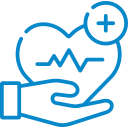Methamphetamine and Adderall are both stimulant drugs. While the effects of these drugs may be similar in many ways, there are some significant differences between them.
People who abuse meth or Adderall may become addicted to them. This article will explore the differences between Adderall and meth.
What you will learn:
- The effects and risks of meth and Adderall
- The differences between meth and Adderall
- How to recognize and treat stimulant addiction
- Where to find effective treatment and support
Contact the specialists at the Carolina Center for Recovery to learn about our holistic addiction treatment programs. Our intake staff will be happy to answer your questions, verify your insurance plan, and help you schedule an intake evaluation.
Understanding the Effects and Risks of Meth Abuse
Meth is a potent, stimulant drug. It is sold under the brand name Desoxyn for the treatment of ADHD, but most meth abuse is related to illicit meth.[1] People make illicit meth using combinations of hazardous chemicals. The process of making methamphetamine is dangerous, but using it can be even more hazardous.[2]
When people smoke, inhale, or swallow meth, the drug crosses the blood-brain barrier quickly. People experience intense side effects, including:
- Elevated heart rate
- Appetite loss
- Euphoria
- Increased energy
- Elevated blood pressure
People may also experience unwanted side effects, including:
- Depression
- Confusion
- Anxiety
- Paranoia
- Aggression
- Violent behaviors
- Delusions
- Hallucinations
- Loss of coordination
- Poor concentration
People who use meth frequently may develop tolerance to it. This means their body has adjusted to a certain amount of a drug. People with tolerance to meth must use larger doses to feel the desired effects of the drug.
Over time, meth abuse can lead to physical dependence and other severe long-term consequences, including:
- Severe dental decay (meth mouth)
- Extreme weight loss
- Malnutrition
- Damage to facial structure, sinuses, and nasal passages
- Chronic runny nose
- Skin infections and scarring
- Lung damage that affects breathing
Methamphetamine addiction can develop quickly. People with meth abuse and addiction typically require significant support and treatment to avoid relapse.
Exploring the Effects and Risks of Adderall Abuse
Adderall is an FDA-approved prescription medication. People may take Adderall or other prescription stimulants to treat attention deficit hyperactivity disorder (ADHD).[3]
Stimulant prescription drugs like Adderall increase central nervous system (CNS) activity. People feel relief from symptoms of ADHD, including:[4]
- Poor concentration
- Impaired attention
- Agitation
- Impulsivity
People may also abuse Adderall and other stimulants used to treat ADHD. Many prescription stimulants are Schedule II controlled substances, meaning they have a significant risk of abuse and addiction. People may misuse prescription Adderall or take it recreationally (without a prescription).
Prescription stimulant abuse includes:
- Taking a larger dose of a medication than prescribed
- Taking a stimulant differently than prescribed, such as crushing and snorting pills
- Taking Adderall longer than prescribed
- Taking Adderall more often than prescribed
Adderall abuse can lead to physical dependence. People who abuse Adderall are at risk of unwanted or dangerous side effects, including:
- Stomach pain
- Mood changes
- Rapid heart rate
- Insomnia
- Dry mouth
- Anxiety or nervousness
- Reduced appetite
- Weight loss
- Headache
- Mood changes
- Numbness in the arms and legs
- Shortness of breath
- Verbal or muscle tics
- Chest pain
- Dizziness
- Fainting
People who abuse Adderall typically require treatment and support to quit. It is important to watch for signs of Adderall abuse and seek treatment as soon as possible.
Adderall vs Meth: Understanding the Differences
Both Adderall and methamphetamine (Desoxyn) are prescription drugs. Doctors prescribe them to patients to manage the symptoms of ADHD and other medical conditions.
Methamphetamine and Adderall are both stimulant drugs. People may experience more energy, anxiety, and other similar effects when using these drugs.
However, there are several crucial differences between meth and Adderall. First, methamphetamine is widely used as an illicit drug. People make illicit meth in unregulated laboratories using dangerous chemicals like acetone and battery acid.[5] There is no regulation of illicit meth production, and it is nearly impossible to determine what chemicals are in a batch of meth.
Methamphetamine use can lead to violent or aggressive behaviors. The effects of meth may be significantly more potent than prescription stimulants because the drugs contain toxins and cross the blood-brain barrier quickly. There is no safe amount of meth.
Adderall abuse can cause unwanted side effects, including insomnia, anxiety, and dry mouth. People taking high doses of Adderall are more likely to experience dangerous side effects. However, people taking Adderall as prescribed are not likely to have harmful side effects.[6]
Adderall and meth are both highly addictive stimulants. Anyone who develops an addiction to stimulants must seek treatment to safely quit using the drugs and prevent relapse.
Find Treatment Now
If you or someone you love struggles with stimulant abuse, you do not have to navigate it on your own. Contact the Carolina Center for Recovery specialists to learn about our holistic addiction treatment programs. You may also find support at any stage of your recovery journey.
References:
- National Institute on Drug Abuse (NIDA): What is methamphetamine?
- United States Drug Enforcement Administration (DEA): Methamphetamine
- National Institute of Health: Neurocognitive, Autonomic, and Mood Effects of Adderall: A Pilot Study of Healthy College Students
- U.S. Food and Drug Administration (FDA): Adderall prescribing label
- NIDA: How is methamphetamine manufactured?
- National Institute of Health: Adverse Effects of Stimulant Interventions for Attention Deficit Hyperactivity Disorder (ADHD): A Comprehensive Systematic Review










